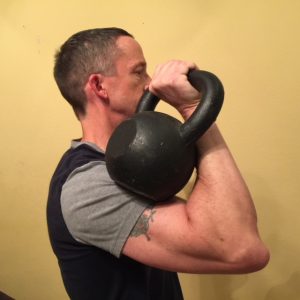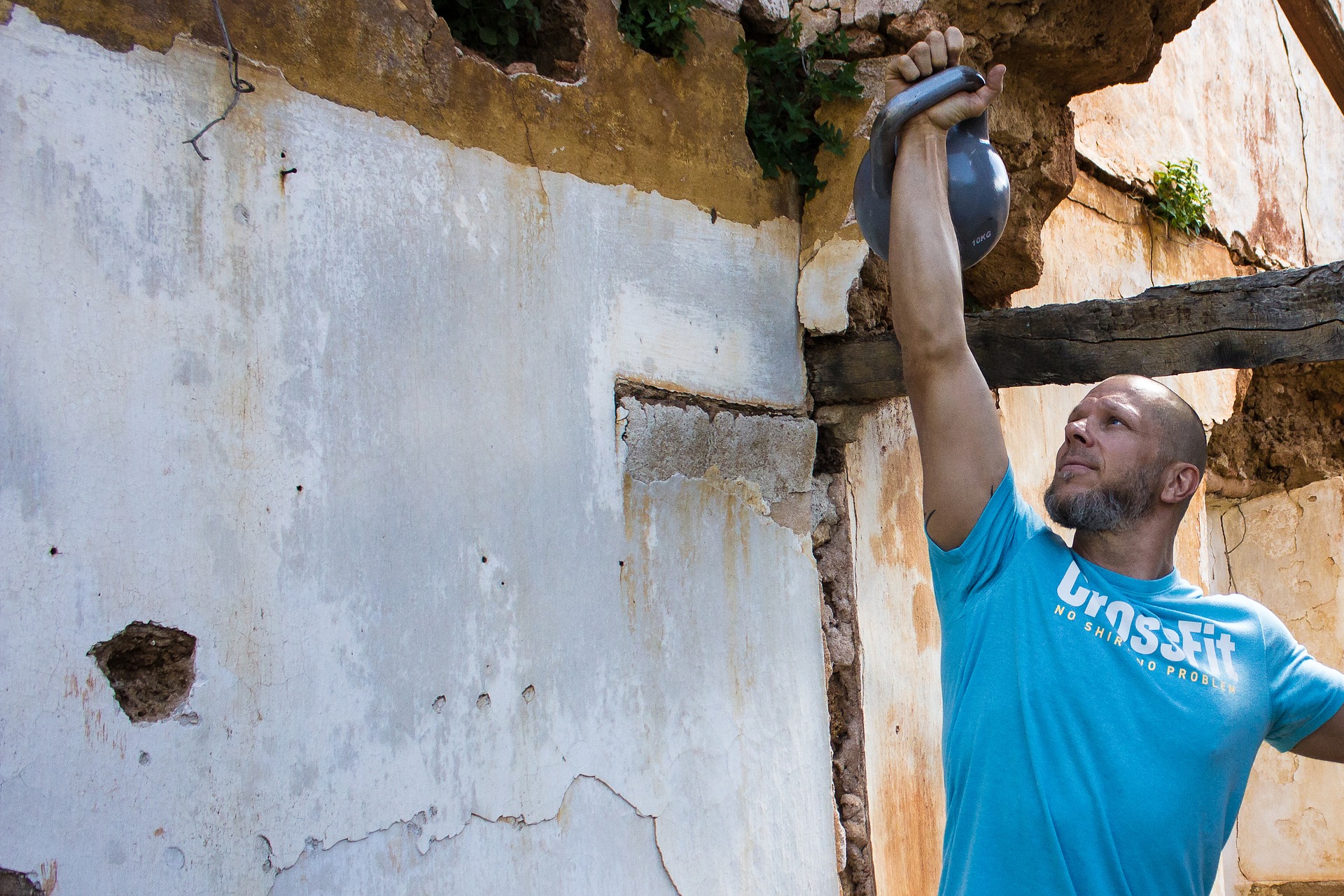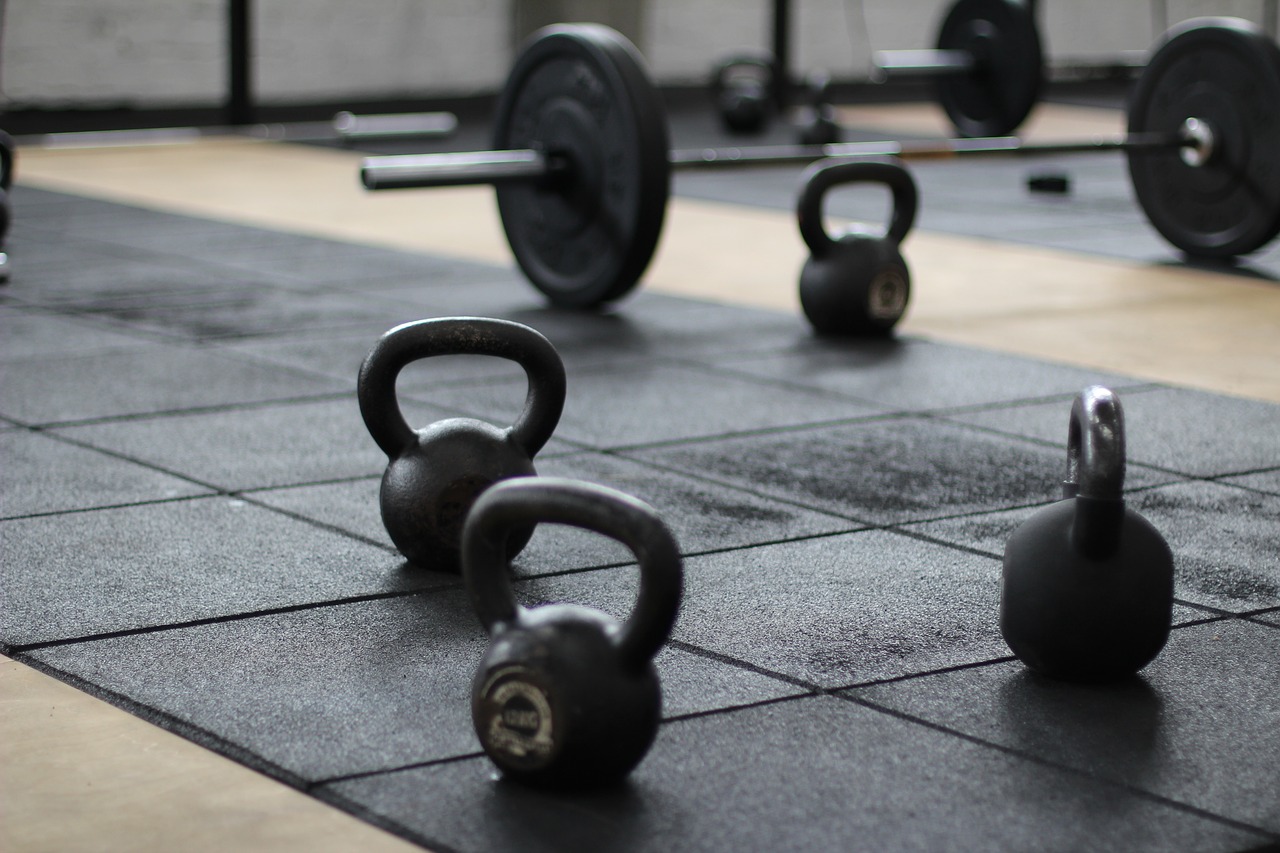The standing kettlebell press is one of the best kettlebell exercises for an athlete’s upper body strength. This exercise works the muscles of the shoulder, triceps, and develops a strong core to support the weight overhead. Additionally, as we’ll discuss later, it also allows for a great many variations. In this article we’re going to talk about how to perform the exercise, make some programming recommendations/examples, and talk about modifications.
Who needs to use this exercise:
- This exercise is important for any athlete that competes in a sport that is performed standing up, in other words just about all of them!
- This is also a great exercise if shoulder issues are a concern. The kettlebell is being pressed at a more shoulder-friendly angle than most “traditional” pressing exercises.
How to perform the exercise:
- To perform this exercise, stand up with the kettlebell in your right hand.
- Bring the kettlebell to your right shoulder.
- It should be resting in the crook between your shoulder and arm, with the handle running across your palm.
- Stick your chest out, pull your shoulders back.
- From here, punch your arm up and press the kettlebell up and slightly behind your head so that it is in line with your hips.
- Lower under control and repeat. After the desired number of repetitions, switch sides.

Technical pointers:
- When pressing the kettlebell with your right hand, lift your left arm to your side to help with balance. When pressing with your left hand, lift your right arm to your side to help with balance.
- Maintain the chest out/shoulders back posture throughout the lift to help protect your lower back.
- Keeping the kettlebell aligned with your hips while overhead helps maintain balance. If you find you are learning backwards or having to step forward to control it, the kettlebell is not aligned with your hips.
Program design:
This exercise should be programmed according to your goals. As a rule, perform three to five working sets for it. If you are training for strength then 1 to 8 repetitions a set, hypertrophy 8 to 12 reps per set, endurance more than 12 reps per set. It should be used to replace your shoulder pressing movements. For example:
Back squats, 3×4-8×85%
Romanian deadlifts, 3×4-8
Bench press, 3×4-8×85%
Bent-over rows, 3×4-8
Standing kettlebell press, 3×4-8 each side
Modifications:
Once you have learned the standing press, there are several modifications that you can use to make the exercise more challenging. These include:
Lunge Press
The lunge press makes this into a total body exercise. Hold the kettlebell in your right hand, so that it rests on your right shoulder. Stand up tall, stick your chest out and pull your shoulders back. From here, take a large step forward with your left foot, landing heel-to-toe. As your left foot hits the ground, several things should happen simultaneously:
- Flex your left knee and hip so that you enter a lunge position.
- As you descend into the lunge, press the kettlebell up with your right hand.
In the bottom position you should be in the lunge with the kettlebell pressed overhead.
From the lunge, stand up and step backwards until your feet are in line again. As you stand up, bring the kettlebell back down to your shoulder. Repeat for the desired repetitions and then switch sides.
Push Press
The push press makes this into a power exercise and allows for more weight to be handled. Begin with the kettlebell on your right shoulder. From this position, quickly move into a quarter squat. Without pausing at the bottom, drive up with your legs. This will force the kettlebell off your shoulder. Finish the exercise by pressing it up until your arm is extended. Lower and repeat.



